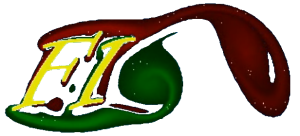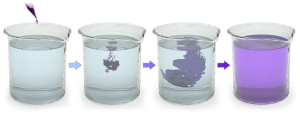Imagine a drop of ink or milk in otherwise clear water at rest, so that the water velocity and the ink velocity are both zero. Everyday experience suggests that the ink will gradually spread over the volume. This process is called diffusion. Due to the diffusion, the colour of the ink spot will become more and more pale, the size of the spot will increase, while the boundary of the spot will become more and more smeared. Temperature behaves in a similar way in a heat-conducting medium. Diffusion does not change the total amount of ink: rather, the ink is being redistributed between fluid particles. This conservative property of the diffusion process is important and is worth remembering. The direction of diffusion is from the areas with high ink concentration to the areas with small concentration. For temperature, the diffusion is from hot to cold particles, so that it always tries to make the distribution uniform. Diffusion is intuitively familiar to most people, and it is also easy to understand and learn. For this reason, we will use the idea of diffusion in our explanation of fluid dynamics.
The short story is that in an incompressible fluid the action of viscosity is equivalent to diffusion of velocity. Each component of the velocity vector is diffused independently. The rate of the diffusion depends on the fluid properties.
The same applies for vorticity: the action of viscosity is equivalent to diffusion of vorticity. Each component of vorticity is diffused independently.
The result of diffusion is the variation in time of the value of the diffused quantity. If, for example, C(t,x) is the ink concentration then, due to diffusion, it will change in time with the rate, which depends on the distribution itself. This rate as a function of the distribution has a special notation, k ΔC(t,x), where k is a constant determined by the properties of the fluid and the ink, and ΔC(t,x) is called a Laplacian of C(t,x).
In what follows we are not going to actually use all these symbols like Laplacian or nabla, except as a shorthand for the corresponding physical processes in the next page.
(Figure: “Blausen 0315 Diffusion” by BruceBlaus – Own work.
Licensed under CC BY 3.0 via Wikimedia Commons.)

